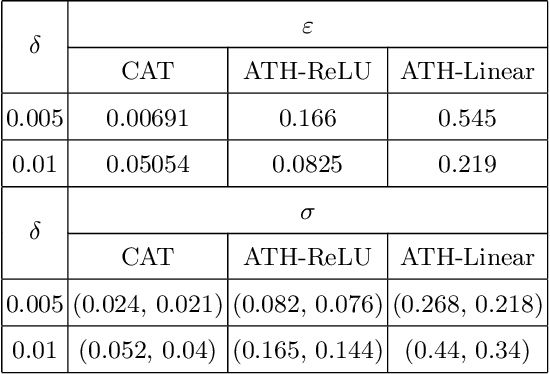Md Ariful Islam
Analysis and prediction of heart stroke from ejection fraction and serum creatinine using LSTM deep learning approach
Sep 28, 2022



Abstract:The combination of big data and deep learning is a world-shattering technology that can greatly impact any objective if used properly. With the availability of a large volume of health care datasets and progressions in deep learning techniques, systems are now well equipped to predict the future trend of any health problems. From the literature survey, we found the SVM was used to predict the heart failure rate without relating objective factors. Utilizing the intensity of important historical information in electronic health records (EHR), we have built a smart and predictive model utilizing long short-term memory (LSTM) and predict the future trend of heart failure based on that health record. Hence the fundamental commitment of this work is to predict the failure of the heart using an LSTM based on the patient's electronic medicinal information. We have analyzed a dataset containing the medical records of 299 heart failure patients collected at the Faisalabad Institute of Cardiology and the Allied Hospital in Faisalabad (Punjab, Pakistan). The patients consisted of 105 women and 194 men and their ages ranged from 40 and 95 years old. The dataset contains 13 features, which report clinical, body, and lifestyle information responsible for heart failure. We have found an increasing trend in our analysis which will contribute to advancing the knowledge in the field of heart stroke prediction.
Robustness of Neural Networks to Parameter Quantization
Mar 26, 2019



Abstract:Quantization, a commonly used technique to reduce the memory footprint of a neural network for edge computing, entails reducing the precision of the floating-point representation used for the parameters of the network. The impact of such rounding-off errors on the overall performance of the neural network is estimated using testing, which is not exhaustive and thus cannot be used to guarantee the safety of the model. We present a framework based on Satisfiability Modulo Theory (SMT) solvers to quantify the robustness of neural networks to parameter perturbation. To this end, we introduce notions of local and global robustness that capture the deviation in the confidence of class assignments due to parameter quantization. The robustness notions are then cast as instances of SMT problems and solved automatically using solvers, such as dReal. We demonstrate our framework on two simple Multi-Layer Perceptrons (MLP) that perform binary classification on a two-dimensional input. In addition to quantifying the robustness, we also show that Rectified Linear Unit activation results in higher robustness than linear activations for our MLPs.
 Add to Chrome
Add to Chrome Add to Firefox
Add to Firefox Add to Edge
Add to Edge